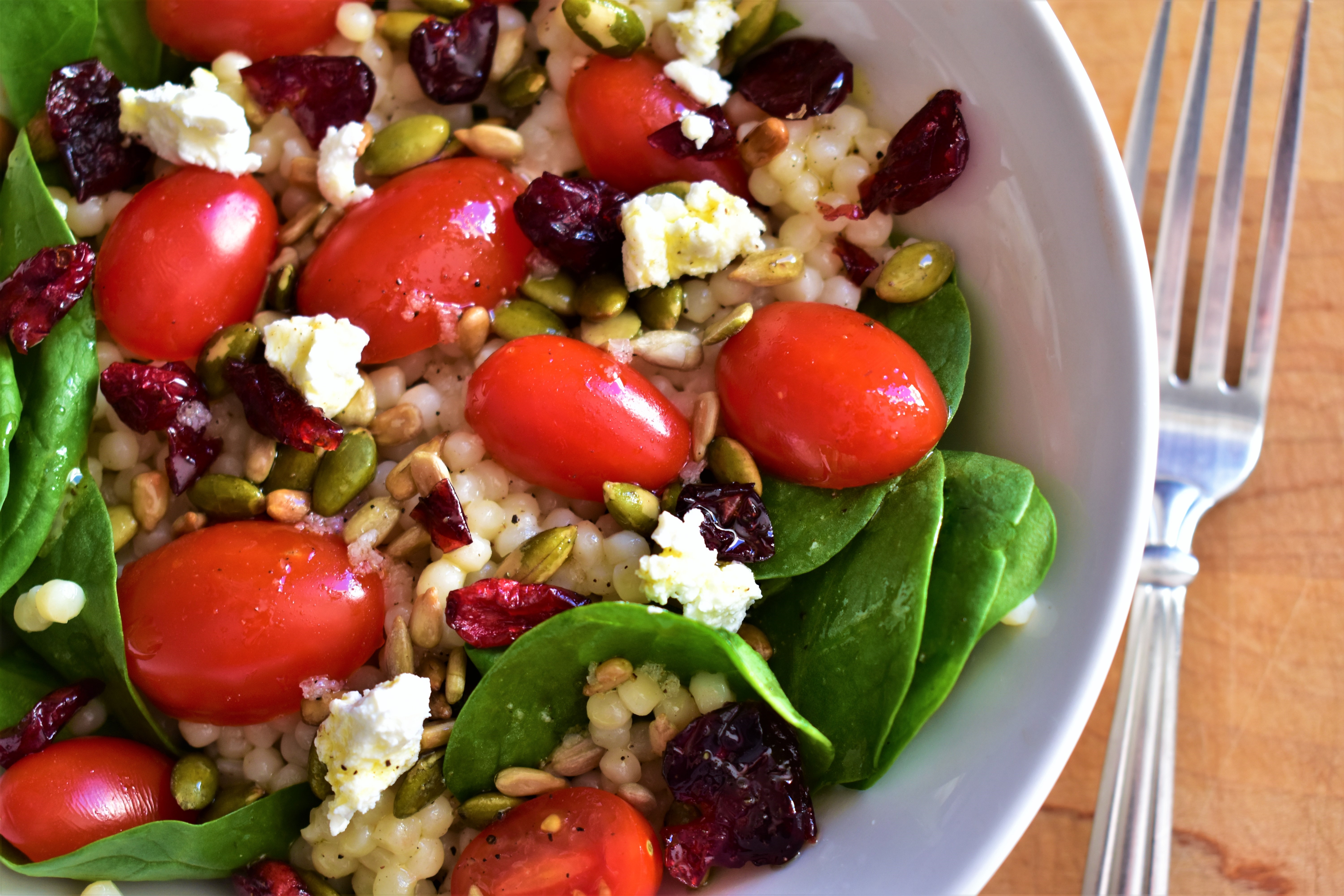**Unveil the Culinary Delights of Momofuku's Bo Ssam: A Symphony of Flavors Awaits**
Embark on a culinary journey to savor the exquisite flavors of Momofuku's Bo Ssam, a dish that tantalizes taste buds with its tender pork shoulder, crispy skin, and an array of accompaniments that elevate the experience. This Korean-inspired feast showcases the artistry of Chef David Chang, blending traditional techniques with a modern twist. As you delve into the recipes provided, discover the secrets behind this iconic dish, from selecting the perfect pork shoulder to crafting the savory Ssamjang sauce. Whether you're a seasoned cook or just starting your culinary adventure, Momofuku's Bo Ssam promises an unforgettable gustatory experience. Prepare to indulge in the ultimate comfort food, perfect for sharing with loved ones or enjoying as a personal treat.
**Recipes Included:**
1. **Momofuku's Bo Ssam:** The star of the show, this recipe guides you through the process of creating the succulent pork shoulder, featuring steaming, roasting, and a unique brining technique that infuses the meat with incredible flavor.
2. **Ssamjang Sauce:** Dive into the world of Korean sauces with this Ssamjang recipe. A blend of fermented soybean paste (doenjang), gochujang (Korean chili paste), and a symphony of spices, this sauce adds a spicy and savory kick to the pork.
3. **Spicy Cucumber Salad:** Refreshing and vibrant, this salad provides a delightful contrast to the richness of the pork. Thinly sliced cucumbers are tossed in a tangy dressing of gochujang, rice vinegar, and sesame oil, creating a palate-cleansing accompaniment.
4. **Kimchi Pancakes:** These crispy pancakes are a delightful addition to the Bo Ssam feast. Made with kimchi, scallions, and a batter infused with rice flour, they offer a delightful crunch and a spicy kick.
5. **Steamed Sticky Rice:** Perfectly complementing the pork and accompaniments, this steamed sticky rice recipe ensures fluffy, tender grains that soak up all the delicious flavors of the dish.
MOMOFUKU'S BO SSAM

This is a recipe to win the dinner party sweepstakes, and at very low stakes: slow-roasted pork shoulder served with lettuce, rice and a raft of condiments. The chef David Chang serves the dish, known by its Korean name, bo ssam, at his Momofuku restaurant in the East Village and elsewhere. He shared the recipe with The Times in 2012. Mr. Chang is known as a kitchen innovator, but his bo ssam is a remarkably straightforward way to achieve high-level excellence with little more than ingredients and time. Simply cure the pork overnight beneath a shower of salt and some sugar, then roast it in a low oven until it collapses. Apply some brown sugar and a little more salt, then roast the skin a while longer until it takes on the quality of glistening bark. Meanwhile, make condiments - hot sauces and kimchi, rice, some oysters if you wish. Then tear meat off the bone and wrap it in lettuce, and keep at that until everything's gone.
Provided by Sam Sifton
Categories dinner, roasts, main course
Time 13h
Yield 6 to 10 servings
Number Of Ingredients 18
Steps:
- Place the pork in a large, shallow bowl. Mix the white sugar and 1 cup of the salt together in another bowl, then rub the mixture all over the meat. Cover it with plastic wrap and place in the refrigerator for at least 6 hours, or overnight.
- When you're ready to cook, heat oven to 300. Remove pork from refrigerator, brush any excess sugar mixture off the fat cap and discard any juices. Place the pork in a roasting pan and set in the oven and cook for approximately 6 hours, or until it collapses, yielding easily to the tines of a fork. (After the first hour, baste hourly with pan juices.) At this point, you may remove the meat from the oven and allow it to rest for up to an hour.
- Meanwhile, make the ginger-scallion sauce. In a large bowl, combine the scallions with the rest of the ingredients. Mix well and taste, adding salt if needed.
- Make the ssam sauce. In a medium bowl, combine the chili pastes with the vinegar and oil, and mix well.
- Prepare rice, wash lettuce and, if using, shuck the oysters. Put kimchi and sauces into serving bowls.
- When your accompaniments are prepared and you are ready to serve the food, turn oven to 500. In a small bowl, stir together the remaining tablespoon of salt with the brown sugar. Rub this mixture all over the cooked pork. Place in oven for approximately 10 to 15 minutes, or until a dark caramel crust has developed on the meat. Serve hot, with the accompaniments.
Nutrition Facts : @context http, Calories 1115, UnsaturatedFat 45 grams, Carbohydrate 50 grams, Fat 69 grams, Fiber 2 grams, Protein 71 grams, SaturatedFat 18 grams, Sodium 1684 milligrams, Sugar 34 grams, TransFat 1 gram
MOMOFUKU'S BO SSAM
Steps:
- Place the pork in a large, shallow bowl. Mix the white sugar and 1 cup of the salt together in another bowl, then rub the mixture all over the meat. Cover it with plastic wrap and place in the refrigerator for at least 6 hours, or overnight. When you're ready to cook, heat oven to 300. Remove pork from refrigerator and discard any juices. Place the pork in a roasting pan and set in the oven and cook for approximately 6 hours, or until it collapses, yielding easily to the tines of a fork. (After the first hour, baste hourly with pan juices.) At this point, you may remove the meat from the oven and allow it to rest for up to an hour. Meanwhile, make the ginger-scallion sauce. In a large bowl, combine the scallions with the rest of the ingredients. Mix well and taste, adding salt if needed. Make the ssam sauce. In a medium bowl, combine the chili pastes with the vinegar and oil, and mix well. Prepare rice, wash lettuce and, if using, shuck the oysters. Put kimchi and sauces into serving bowls. When your accompaniments are prepared and you are ready to serve the food, turn oven to 500. In a small bowl, stir together the remaining tablespoon of salt with the brown sugar. Rub this mixture all over the cooked pork. Place in oven for approximately 10 to 15 minutes, or until a dark caramel crust has developed on the meat. Serve hot, with the accompaniments.
MOMOFUKU'S BO SSäM RECIPE

Our bo ssäm was a long time in the making before it showed up on the menu. I'd had an inkling for years it would be a good idea-bo ssäm is a supercommon dish in Korean restaurants, though the ingredients and cooking that go into it are frequently an afterthought. The oysters are usually Gulf oysters from a bucket, the kind that are really only suited to frying; the pork is belly that's been boiled into submission. Almost every time I ate it at a restaurant, I'd think about how much better it would be if all the ingredients were awesome. The first time we made one was for family meal back when we'd just started serving kimchi puree on our oysters at Noodle Bar. One of the new cooks was fucking up oysters left and right, so I made him shuck a few dozen perfectly, and then we ate them ssäm-style: wrapped up in lettuce with rice, kimchi, and some shredded pork shoulder that was otherwise destined for the ramen bowl. (The shoulder in our bo ssäm is, essentially, the same shoulder we put in the soup at Noodle Bar, except that we add more sugar in the last step to make the crust even more delicious-it's like a shoulder encrusted in pig candy.) So there, in the cramped, dark subterranean kitchen of Noodle Bar, I ate the best bo ssäm of my life. I think that experience and our take on the bo ssäm are typical of the way we approach "traditional" dishes: with one foot rooted in tradition and the other foot kicking it forward. There is a great line from Emerson that sums up my perspective perfectly: "Meek young men grow up in libraries, believing it their duty to accept the views which Cicero, which Locke, which Bacon have given, forgetful that Cicero, Locke, and Bacon were only young men in libraries when they wrote these books."
Provided by David Chang
Yield 6-8 servings
Number Of Ingredients 11
Steps:
- 1. Put the pork in a roasting pan, ideally one that holds it snugly. Mix together the granulated sugar and 1 cup of the salt in a bowl, then rub the mixture into the meat; discard any excess salt-and-sugar mixture. Cover the pan with plastic wrap and put it into the fridge for at least 6 hours, or overnight.
- 2. Heat the oven to 300°F. Remove the pork from the refrigerator and discard any juices that have accumulated. Put the pork in the oven and cook for 6 hours, basting with the rendered fat and pan juices every hour. The pork should be tender and yielding at this point-it should offer almost no resistance to the blade of a knife and you should be able to easily pull meat off the shoulder with a fork. Depending on your schedule, you can serve the pork right away or let it rest and mellow out at room temperature for up to an hour.
- 3. When ready to serve-sauces are made, oysters are ready to be shucked, lettuce is washed, etc.-turn the oven to 500°F.
- 4. Stir together the remaining 1 tablespoon salt and the brown sugar and rub the mixture all over the pork. Put it in the oven for 10 to 15 minutes, until the sugar has melted into a crisp, sweet crust.
- 5. Serve bo ssäm whole and hot, surrounded by the accompaniments.
MOMOFUKU BO SSAM
Steps:
- 1. Place the pork in a large, shallow bowl. Mix the white sugar and 1 cup of the salt together in another bowl, then rub the mixture all over the meat. Cover it with plastic wrap and place in the refrigerator for at least 6 hours, or overnight. 2. When you're ready to cook, heat oven to 300. Remove pork from refrigerator and discard any juices. Place the pork in a roasting pan and set in the oven and cook for approximately 6 hours, or until it collapses, yielding easily to the tines of a fork. (After the first hour, baste hourly with pan juices.) At this point, you may remove the meat from the oven and allow it to rest for up to an hour. 3. Meanwhile, make the ginger-scallion sauce. In a large bowl, combine the scallions with the rest of the ingredients. Mix well and taste, adding salt if needed. 4. Make the ssam sauce. In a medium bowl, combine the chili pastes with the vinegar and oil, and mix well. 5. Prepare rice, wash lettuce and, if using, shuck the oysters. Put kimchi and sauces into serving bowls. 6. When your accompaniments are prepared and you are ready to serve the food, turn oven to 500. In a small bowl, stir together the remaining tablespoon of salt with the brown sugar. Rub this mixture all over the cooked pork. Place in oven for approximately 10 to 15 minutes, or until a dark caramel crust has developed on the meat. Serve hot, with the accompaniments.
Tips:
- Choose the right pork belly: Look for a piece of pork belly that is at least 3 inches thick and has a good amount of marbling. This will ensure that the meat is tender and flavorful.
- Score the skin: Before cooking the pork belly, score the skin with a sharp knife. This will help the skin to crisp up and prevent it from becoming tough.
- Roast the pork belly until it is tender: The pork belly should be roasted until it is tender and cooked through. This will take about 2 hours at 300 degrees Fahrenheit.
- Make the Ssamjang sauce: While the pork belly is roasting, make the Ssamjang sauce. This sauce is made with a variety of ingredients, including gochujang (Korean chili paste), doenjang (Korean soybean paste), and garlic. The sauce should be spicy, sweet, and savory.
- Assemble the Ssam: To assemble the Ssam, place a piece of lettuce on a plate. Add a piece of pork belly, a dollop of Ssamjang sauce, and some kimchi. Wrap the Ssam up and enjoy!
Conclusion:
Momofuku's Bo Ssam is a delicious and easy-to-make dish that is perfect for sharing with friends and family. The pork belly is tender and flavorful, the Ssamjang sauce is spicy and addictive, and the kimchi adds a nice bit of acidity. If you are looking for a new Korean dish to try, Momofuku's Bo Ssam is a great option.
Are you curently on diet or you just want to control your food's nutritions, ingredients? We will help you find recipes by cooking method, nutrition, ingredients...
Check it out »
You'll also love












